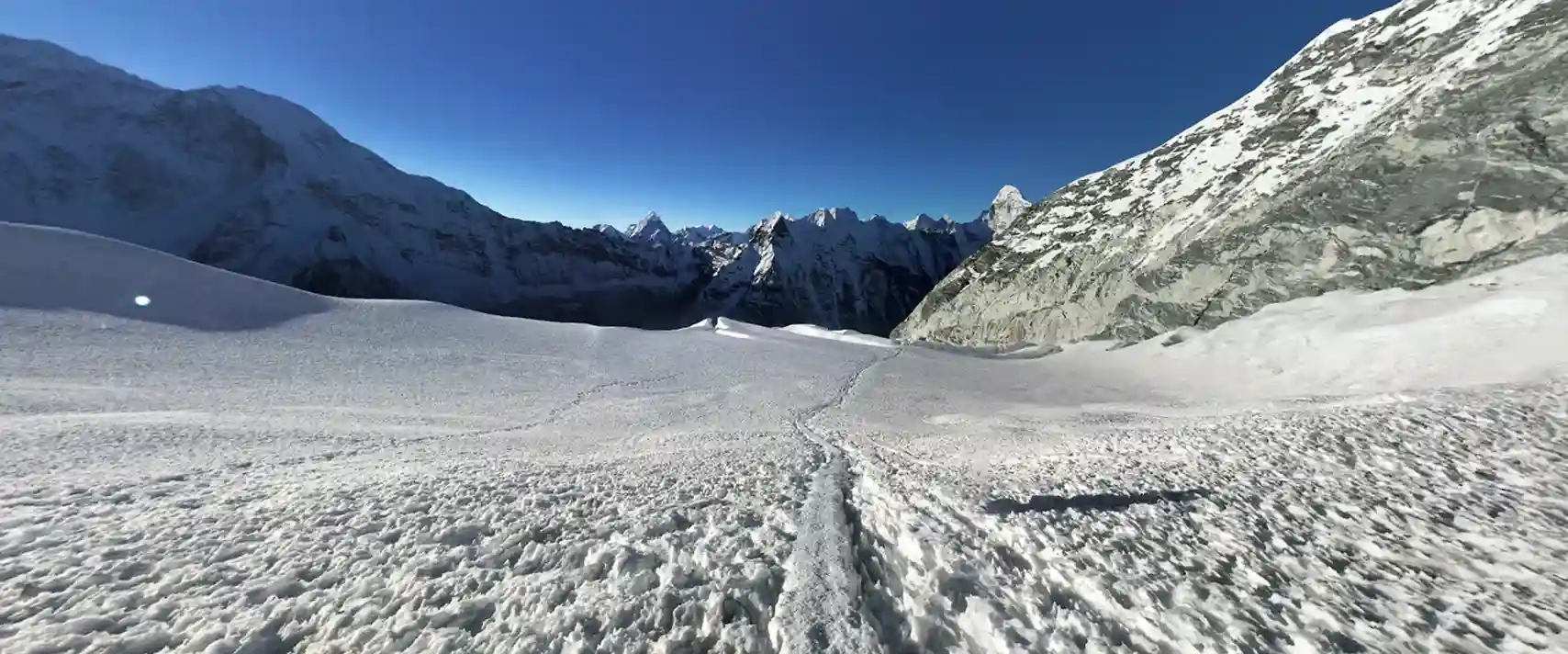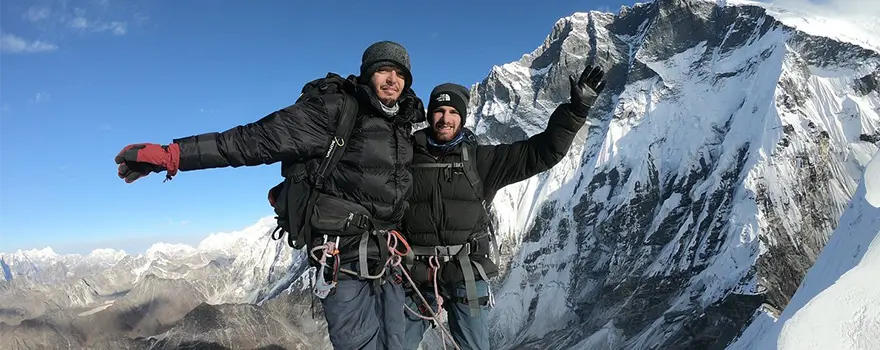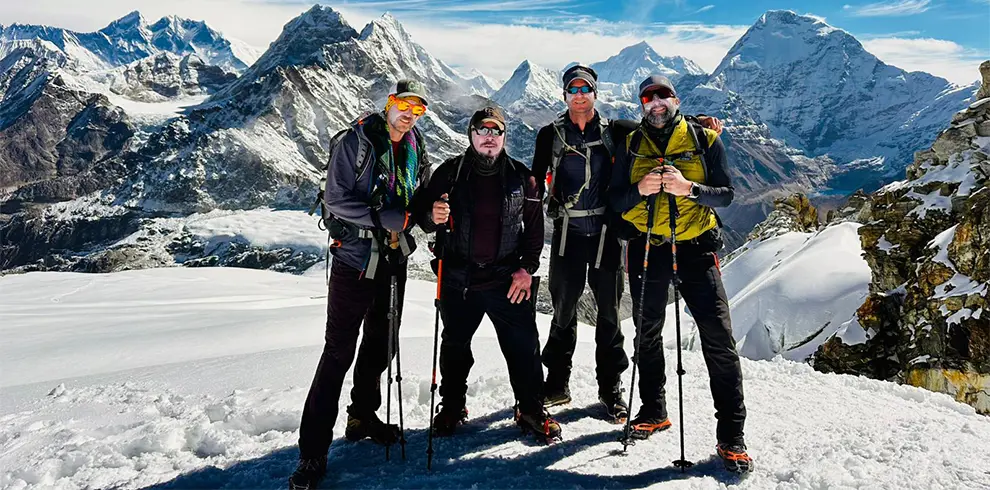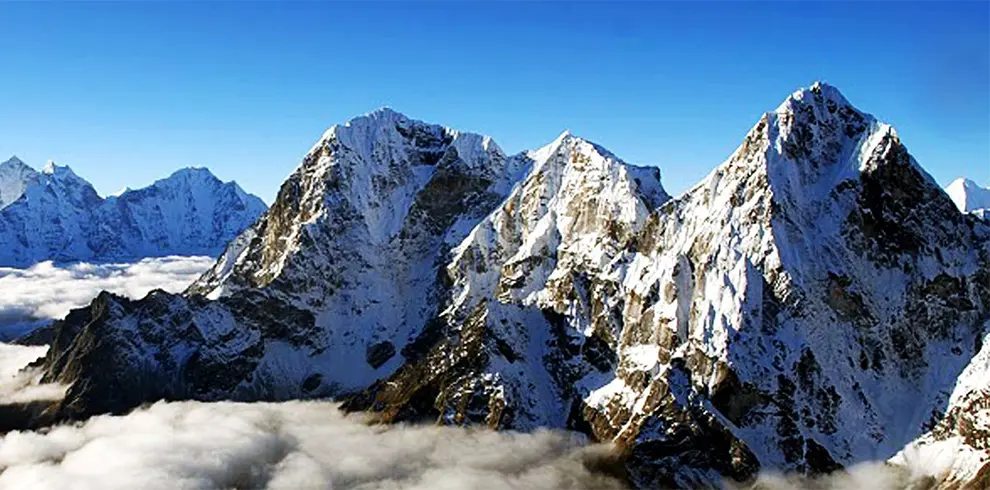
All You Need to Know About Climbing Island Peak
published on: 12th Jun, 2024
Island Peak

published on: 12th Jun, 2024
Island Peak
Island Peak, also known as Imja Tse, is one of the most popular trekking peaks in Nepal. Standing at 6,189 meters (20,305 feet), it offers a thrilling adventure for climbers seeking to experience high-altitude mountaineering in the Himalayas. This blog covers everything you need to know about climbing Island Peak, from preparation and training to the actual climb and post-climb tips.
1. Overview of Island Peak
Island Peak is located in the Khumbu region of Nepal, within the Sagarmatha National Park. The peak gets its name because it appears as an island in a sea of ice when viewed from Dingboche. The climb is often combined with the classic Everest Base Camp trek, making it an excellent choice for those wanting to experience both trekking and climbing in the Everest region.
2. Best Time to Climb Island Peak
The best times to climb Island Peak are during the pre-monsoon (spring) season from March to May and the post-monsoon (autumn) season from late September to November. During these periods, the weather is generally stable, and the temperatures are moderate, providing the best conditions for climbing.
3. Required Permits For Island Peak
To climb Island Peak, you will need the following permits:
These permits can be obtained in Kathmandu or through a trekking agency.
4. Physical Preparation and Training
Climbing Island Peak requires a good level of physical fitness. It is recommended to engage in a comprehensive training program at least 3-6 months before the climb. This should include:
5. Equipment and Gear
Proper equipment is essential for a successful climb. Here’s a checklist of necessary gear:
All Necessary equipment are provided by Master Himalaya treks and Expedition.
6. The Climb: Route and Itinerary
A typical Island Peak climb follows this general itinerary:
7. Summit Day
Summit day usually starts early, around midnight or 1 AM. The climb involves navigating through a glacier, crevasses, and a steep head-wall before reaching the summit ridge. The final push to the summit is technically challenging, requiring the use of fixed ropes. Upon reaching the summit, climbers are rewarded with stunning panoramic views of Lhotse, Nuptse, Makalu, and other surrounding peaks.
8. Acclimatization and Health Tips
Proper acclimatization is crucial to avoid altitude sickness. Follow these tips:
9. Post-Climb Recovery
After the climb, give your body time to recover. Here are some tips:
10. Environmental Responsibility
Climbers must be mindful of their environmental impact. Follow these guidelines:
11. Island Peak Climbing Cost
The cost of island peak varies according to the services trekkers want. Master Himalaya treks and expedition has a well crafted package of island peak Climbing with its detailed Itinerary, cost Inclusion and cost exclusion.
Conclusion
Climbing Island Peak is a challenging yet rewarding adventure that offers breathtaking views and a sense of accomplishment. With proper preparation, training, and respect for the environment, it can be an unforgettable experience. Whether you are a seasoned climber or a trekking enthusiast looking to venture into mountaineering, Island Peak is an excellent choice for your next adventure.

18
Days
Island Peak, also known as Imja Tse, is one of the most popular trekking peaks in Nepal. Standing at an impressive altitude of 6,189 meters, it offers a thrilling climbing experience and breathtaking views of the surrounding Himalayan peaks. Island P...
Start Journey


14
Days
Mera Peak is one of the highest trekking peaks in Nepal, standing at an elevation of 6,476 meters. It offers an exhilarating climbing experience and stunning panoramic views of the Himalayan range, including the mighty peaks of Everest, Lhotse, Makal...
Start Journey


19
Days
Lobuche Peak is one of the prominent trekking peaks in the Everest region of Nepal. Standing at an altitude of 6,119 meters, it offers an exhilarating climbing experience and stunning panoramic views of the surrounding Himalayan peaks. Lobuche Peak C...
Start Journey
